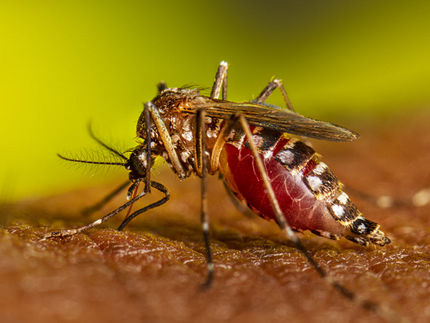Data analysis looks at Zika’s introduction to Americas, predicts microcephaly cases
Researchers at the University of Florida and several peer institutions have developed a model mapping the spread of Zika virus in the Americas and predicting that the virus arrived in Brazil in late 2013 or early 2014 before spreading throughout the region. The model also projects the number of microcephaly cases that will occur by the end of the year, with hundreds of cases in Mexico, Haiti and Colombia, and thousands of cases in Brazil due to Zika virus infection. Their findings were published in the Proceedings of the National Academy of Sciences.
In Bahia, a region of northeast Brazil, the epidemic model estimates 2.19 percent of Zika infections during the first trimester resulted in a child born with microcephaly. By applying this rate throughout the region, the model projects that by Dec. 10, 2017 nearly 3,000 children will have been born with microcephaly in Brazil as a result of Zika virus infection. For the period between Feb. 1, 2016 and Dec. 10, 2017, the model projects 728 microcephaly cases in Haiti, 723 cases in Mexico, 504 cases in Colombia and 43 cases in Puerto Rico.
“The strength of the model comes from how much information it is incorporating from different sources,” said Natalie Dean, Ph.D., a postdoctoral associate in the UF College of Public Health and Health Professions’ and the UF College of Medicine’s department of biostatistics.
Dean worked with Ira Longini, Ph.D., a professor of biostatistics in the UF College of Public Health and Health Professions and the UF College of Medicine, and Diana P. Rojas, M.D., a graduate student in the department of epidemiology in the UF College of Public Health and Health Professions and the UF College of Medicine, to examine the data. Longini collaborated with Elizabeth Halloran, D.Sc., from the University of Washington and Alessandro Vespignani, Ph.D., from Northeastern University to design this study.
The epidemic model considers 12 cities, including Rio de Janeiro, Brasilia, Recife and Sao Paulo, to determine where Zika virus first arrived, projecting an estimated 90 percent likelihood that the virus was introduced to Brazil between August 2013 and April 2014. While it could have landed in any of these cities, Rio de Janeiro has a higher probability of being the city of introduction than any of the others considered. The researchers compared the modeling projections with phylogenetic data on Zika virus to determine that December 2013 was the most likely time of introduction.
In addition to the most likely time and location of the Zika virus’ introduction to the Americas, the article discusses how the virus spread throughout South America and the Caribbean.
“We think air travel from Brazil to other countries in South America and the Caribbean caused the virus to spread throughout the region,” Longini said.
Rojas also suggested travel has played a role in spreading the disease.
“Zika was introduced to Brazil from ZIKV-endemic areas — mostly from the Pacific Islands,” she said. “It spread into the Caribbean very quickly in islands infested by the mosquito vector. This could be due to tourism and the high mobility of people between these islands.”
Although the Zika virus can be spread between humans through sexual transmission, mosquitoes are thought to be the primary vector of human infection. Scientists consider Aedes aegypti the primary vector of the virus. Aedes albopictus is also a potential vector, covering a much larger geographical area than A. aegypti, although infectious disease experts know less about A. albopictus’ capacity to spread Zika. “Zika virus is still circulating in Latin America,” Rojas said. “The large outbreaks are over in some of countries but there is still transmission of the virus in areas with presence of the mosquito vector, so people have to take precautions when traveling to any of these areas with transmission.”
She also emphasized that, in Florida, continued surveillance is necessary to detect future transmission within the state.























































